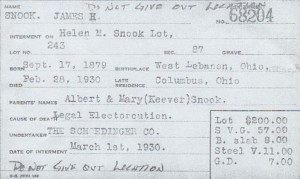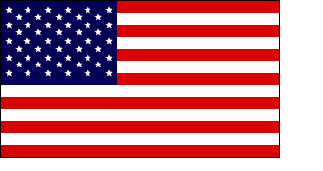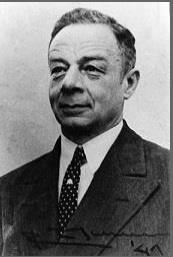Olympians are people who have achieved success in their sports at the highest level. Such success often translates to other fields, and it is no surprise that numerous Olympians have succeeded outside of sports. With the name recognition that comes from their sports prowess, it is also no surprise that many Olympians have moved into politics. Many of them have served in their national legislatures.
This is a fairly difficult list to track but following is what we consider a fairly complete list. But we’ll accept additions to this list from anybody who has further information.
[table]
Athlete,Nation(s),Sport(s),Era,Notes
David Anderson,CAN,ROW,1960,Member of the Canadian Parliament from 1968 through 1972 and again from 1993 through 2006 (Liberal)
Wendell Anderson,USA,ICH,1956,Member of US Senate; Minnesota 1976-78 (Democrat)
Nancy Arendt-Kemp,LUX,SWI/TRI,1988-00,Member of Luxembourgish D’Chamber from 23 January 1996 through 8 June 1999 and 3 June 2003 through 5 June 2004 and since 3 August 2004 (CSV)
Taro Aso,JPN,SHO,1976,Shugiin (House of Representatives) 1979-83; since 1986 Liberal Democratic Party
John Jacob Astor,GBR,RAQ,1908,Member of the UK House of Commons 1922-45. Member of the UK House of Lords 1956-71 (Conservative)
Mehmet Ali Aybar,TUR,ATH,1928,Member of Turkish Meclis from 1965 through 1973 (TİP)
Badmaanyambuugiin Bat-Erdene,Mgl MGL,JUD,1988-00,Member of Mongolian Ulsyn Ikh Khural since 2004 (MAN)
Philip Baker,GBR,ATH,1912-,Member of the UK House of Commons 1929-31 and 1936-70 (Labour)
Richard Barnett,GBR,SHO,1908,Member of the UK House of Commons 1916-29 (Conservative)
John Pius Boland,GBR,TEN,1896,Member of the UK House of Commons 1900-18 (Irish Parliamentary Party)
Valeriy Borzov,URS,ATH,1972-76,Member of Ukrainian Rada from 1998 through 2006 (Rukh; SDPU(o))
Robert Bourne,GBR,ROW,1912,Member of the UK House of Commons 1924-38 (Conservative)
James Bowman,CAN,CUR,1932,Member of Canadian House of Commons 1930 through 1935 (Conservative)
Svetlana Boyarkina-Zhurova,RUS,SSK,1994-06,Member of Russian Duma since 2007 (Edinaya Rossiya)
József Bozsik,HUN,FTB,1952,Member of Hungarian Országgyűlés from 1950 through 1953 (MDP)
Bill Bradley,USA,BAS,1964,Member of US Senate; New Jersey; 1979-97 (Democrat)
Adam Brodecki,POL,FSK,1972,Member of Polish Sejm from 1989 through 1991 (PZPR)
Sergey Bubka,URS/UKR/EUN,ATH,1988-00,Member of Ukrainian Rada from 2002 through 2006 (PR)
David; Lord Burghley,GBR,ATH,1924-32,Member of the UK House of Commons 1931–1943. Member of the UK House of Lords 1956-81 (Conservative)
William Burns,CAN,CUR,1932,Member of Canadian House of Commons 1930 through 1935 (Conservative)
David Butler,ZIM,SAI,1960-64,Member of Rhodesian Legislative Assembly from 1962 through 11 November 1965 (UFP and RP)
Ben Campbell,USA,JUD,1964,Member of US Senate; Colorado; 1993-05 (Democrat/Republican)
Menzies Campbell,GBR,ATH,1964,Member of the UK House of Commons 1983- (Liberal 1983-88; Liberal Democrat 1988- )
Chris Chataway,GBR,ATH,1952-56,Member of the UK House of Commons 1959-66 and 1969-74 (Conservative)
Seb Coe,GBR,ATH,1980-84,Member of the UK House of Commons 1992-97; Member of the UK House of Lords 2000- (Conservative)
Eamonn Coghlan,IRL,ATH,1976-88,Member of the Irish Senate since 2011 (Fine Gael)
Amedeo D’Albora,ITA,ART,1936,Member of Italian Senato from 25 May 1958 through 15 May 1963 (Gruppo Misto; MSI; PDI)
William; Lord Desborough,GBR,FEN,1906,Member of the UK House of Commons 1880-1882; 1885-1886; 1892-1893 and 1900-05 (Liberal 1880-1893 Conservative 1900-05). Member of the UK House of Lords 1905-45.
Heike Drechsler,GDR/GER,ATH,1988-00,Member of East-German Volkskammer from 1986 through 1990 (FDJ)
Guy Drut,FRA,ATH/IOC,1972-76 / 1996 – Present,Member of French Assemblée nationale; Seine-et-Marne; 16 March 1986 through 25 June 2007 (RPR; UMP)
Arsen Fadzayev,URS/EUNUZB,WRE,1988-96,Member of Russian Duma from 2003 through 2011 (SPS; Edinaya Rossiya)
Pedro Figari,URU,ART,1932,Member of Uruguayan Cámara de Representantes from 1897 through 1905 (?) (Partido Colorado)
Anatoly Firsov,URS,ICH,1964-72,Member of USSR Syezd narodnykh deputatov SSSR from 1989 through 1991
Robert Fournier-Sarlovèze,FRA,POL,1900,Member of French Assemblée nationale; Oise; from 24 April 1910 through 31 May 1914 (Républicain Progressiste); 16 November 1919 through 31 May 1932 (ERD/URD)
Ruth Fuchs,GDR,ATH,1972-80,Member of East-German Volkskammer from 18 March 1990 through 2 October 1990 (PDS). Member of German Bundestag from 3 October 1990 through 20 December 1990 and from 11 March 1992 through 2002 (PDS)
Eberhard Gienger,FRG,GYM,1972-76,Member of German Bundestag since 22 September 2002 (CDU)
Oliver St. John Gogarty,IRL,ART,1924,Member of Irish Seanad Éireann from 1922 through 1936 (Cumann na nGaedheal)
Nancy Greene,CAN,ASK,1960-68,Member of Canadian Senate; British Columbia; since 2 January 2009 (Conservative)
John Gretton Jr.,GBR,SAI,1900,Member of the UK House of Commons 1895-06; 1907-43. Member of the UK House of Lords 1944-47 (Conservative)
Kelpo Gröndahl,FIN,WRE,1948-52,Member of Finnish Eduskunta from 20 February 1962 through 22 March 1970 (SKDL)
Gunnar Gundersen,Nor NOR,SWI,1976,Member of Norwegian Storting since 2005 (Høyre)
Dezső Gyarmati,HUN,WAP,1948-64,Member of Hungarian Országgyűlés from 1990 through 1994 (MDF)
Han Pil-Hwa,PRK,SSK,1964-72,Member of North-Korean Choego Inmin Hoe-ui from 1998 through ?
John Harun,KEN,SHO,1968-72,Member of Kenyan National Assembly; Kilome; from 2007 through 4 March 2013 (PICK)
Hiroshi Hase,JPN,WRE,1984,Shugiin (House of Representatives) since 2000 Liberal Democratic Party
Seiko Hashimoto,JPN,CYC/SSK,1984-96,Member of Japanese Sangiin since 26 July 1995 (LDP)
Heikki Hasu,FIN,CCS/NCO,1948-52,Member of Finnish Eduskunta from 20 February 1962 through 4 April 1966 and 25 April 1967 through 22 March 1970 (Suomen Keskusta)
Terry Higgins,GBR,ATH,1952,Member of the UK House of Commons 1964-97 (Conservative)
Manabu Horii,JPN,SSK,1994-02,Member of Japanese Shugiin since 17 December 2012 (LDP)
Robert Jaworski,PHI,BAS,1968,Member of 11th and 12th Congress of the Philippines from 1998 through 2004 (Independent)
Alina Kabayeva,RUS,RGY,2000-04,Member of Russian Duma since 2007 (Edinaya Rossiya)
Kunishige Kamamoto,JPN,FTB,1964-68,Shugiin (House of Councillors) 1995-98 Liberal Democratic Party
Pantelis Karasevdas,GRE,SHO,1896,Member of Greek Vouli ton Ellinon from 1910 through ? (Komma Fileleutheron)
Aleksandr Karelin,RUS/URS/EUN,WRE,1988-00,Member of Russian Duma since 1999 (Edinaya Rossiya)
Wilfred Kent-Hughes,Aus AUS,ATH,1920,Member of Australian House of Representatives; Chisholm; from 10 December 1949 through 31 July 1970 (Liberal)
Leri Khabelovi,RUS/URS/EUN,WRE,1988-96,Member of Georgian Sakartvelos parlament’i since 2012 (K’art’uli ots’neba – demokratiuli Sak’art’velo)
Makharbek Khadartsev,RUS/URS/EUN/UZB,WRE,1988-00,Member of Russian Duma since 21 December 2011 (Edinaya Rossiya)
Svetlana Khorkina,RUS,GYM,1996-04,Member of Russian Duma from 2007 through 2011 (Edinaya Rossiya)
Serik Konakbayev,URS,BOX,1980,Member of Kazakh Majilis from 1999 through 2012
Grigorios Lambrakis,GRE,ATH,1936,Member of the Greek Vouli ton Ellinon 1961 through 27 May 1963 (EDA)
Victor de Laveleye,BEL,HOK/TEN,1920-28,Member of Belgian Kamer van Volksvertegenwoordigers from 1939 through 14 December 1945 (Liberale Partij)
Bob Mathias,USA,ATH,1948-52,Member of US House of Representatives; California; 1967-75 (Republican)
Marjo Matikainen,FIN,CCS,1984-88,Member of Finnish Eduskunta from 19 March 2003 through 27 March 2003 and since 21 July 2004 (Kansallinen Kokoomus). Member of European Parliament from 11 November 1996 through 19 July 2004 (Kansallinen Kokoomus / ED)
Tom McMillen,USA,BAS,1972,Member of US House of Representatives; Maryland; 1987-93 (Democrat)
Pietro Mennea,ITA,ATH,1972-88,Member of European Parliament from 1999 through 2004 (I Democratic / ELDR)
Daniel Mérillon,FRA,GYM/SHO,1900-12,Member of French Assemblée nationale; Gironde; from 18 October 1885 through 11 November 1889 (Union républicaine)
Ralph Metcalfe,USA,ATH,1932-36,Member of US House of Representatives; Illinois; 1971-78 (Democrat)
Juha Mieto,FIN,CCS,1972-84,Member of Finnish Eduskunta from 21 March 2007 through 19 April 2011 (Suomen Keskusta)
Colin Lord Moynihan,GBR,ROW,1980-84,Member of the UK House of Commons 1983-92; Member of the UK House of Lords 1997- (Conservative)
Kenji Ogiwara,JPN,NCO,1992-02,Member of Japanese Sangiin from 26 July 2004 through 25 July 2010 (LDP)
Katsuo Okazaki,JPN,ATH,1924,Shugiin (House of Representatives) 1949-58 Liberal Democratic Party
Kiyoko Ono,JPN,GYM,1960-64,Shugiin (House of Councillors) 1986-98; 2001-07 Liberal Democratic Party
Rudolph Baron van Pallandt,Ned NED,SHO,1908,Member of Dutch Eerste Kamer from 20 September 1910 through 15 March 1913 (death) (CHU)
Vladimir Parfenovich,URS,CAN,1980,Member of Belarussian Palata Pradstawnikow from 2000 through ?
Zbigniew Pietrzykowski,POL,BOX,1956-64,Member of Polish Sejm from 14 October 1993 through 10 October 1997 (BdP)
Hugh Plaxton,CAN,ICH,1928,Member of Canadian House of Commons 14 October 1935 through 1940 (Liberal)
Pavel Ploc,TCH,SKJ,1984-88,Member of Czech Poslanecká sněmovna since 3 June 2006 (CSSD)
Payao Poontarat,THA,BOX,1976,Member of Thai from 2001 through his death (?) (Phak Prachathipat)
Rolf Rämgård,SWE,CCS,1960,Member of the Swedish Riksdag 1974 through 1985 (Centerpartiet)
Jozef Regec,TCH,CYC,1988,Member of Czech Senát since 23 October 2010 (CSSD; SPOZ)
Philip Richardson,GBR,SHO,1908-12,Member of the UK House of Commons 1922–1931 (Conservative)
Roman Rurua,URS,WRE,1964-68,Member of Georgian Sakartvelos parlament’i from 1999 though 2003 (Sportuli Sakartvelo)
Jim Ryun,USA,ATH,1964-72,Member of US House of Representatives; Kansas; 1996-07 (Republican)
Yasutaro Sakagami,JPN,WAP,1932-36,Shugiin (House of Representatives) 1958-76 Socialist Party
Viktor Savchenko,URS,BOX,1976-80,Member of Ukrainian Rada from 7 August 1994 through 12 May 1998 (Independent)
Friedel Schirmer,GER,ATH,1952,Member of German Bundestag from 28 September 1969 through 5 March 1983 (SPD)
Ilona Schoknecht-Slupianek,GDR,ATH,1976-80,Member of East German Volkskammer from 1976 through 1986 (FDJ)
Gustav-Adolf Schur,GER,CYC,1956-60,Member of East German Volkskammer 1958 through 1990 (FDJ; SED; PDS). Member of German Bundestag from 1998 through 2002 (PDS).
James Sharpe,AHO,ATH,1992,Member of Dutch Tweede Kamer 17 June 2010 through 19 November 2010 (PVV)
Jyotirmoyee Sikdar,IND,ATH,1996,Member of Indian Lok Sabha; Krishnanagar; from 2003 through 2009 (CPI(M))
Karni Singh,IND,SHO,1960-80,Member of Indian Lok Sabha; Bikaner; from 1952 through 1977 (Independent)
Jiří Šlégr,CZE/TCH,ICH,1992-98,Member of Czech Poslanecká sněmovna since 29 May 2010 through 14 June 2013 (CSSD; LEV 21)
Peter Šťastný,TCH/SVK,ICH,1980-94,Member of European Parliament since 2004 (SDKÚ-DS / EPP)
Marcus Stephen,NRU/SAM,WLT,1992-00,Member of Parliament of Nauru since 3 May 2003 (Independent)
Mieke Sterk,NED,ATH,1968,Member of Dutch Tweede Kamer 30 August 1994 through 19 May 1998 (PvdA)
Joe Sullivan,CAN,ICH,1928,Member of Canadian Senate; Ontario; from 12 October 1957 through 18 February 1985 (Progressive Conservative)
Jaan Talts,URS,WLT,1968-72,Member of Estonian Riigikogu from 11 March 1995 through 17 April 1995 and 6 November 1995 through 1 December 1996 (Eesti Reformierakond)
Jüri Tamm,EST/URS,ATH,1980-96,Member of Estonian Riigikogu 1999 through 2003 (Mõõdukad)
Harald Tammer,EST,ATH/WLT,1920-24,Member of the Estonian Rahvuskogu from 1937 through 1940
Ryoko Tamura-Tani,JPN,JUD,1992-08,Shugiin (House of Councillors) since 2013 Liberal Democratic Party
Masami Tanabu,JPN,ICH,1960-64,Shugiin (House of Representatives) 1979-96 various parties
Erica Terpstra,NED,SWI,1960-64,Member of Dutch Tweede Kamer 8 June 1977 through 22 August 1994 and 19 May 1998 through 15 December 2003 (both VVD)
Arto Tiainen,FIN,CCS,1956-68,Member of Finnish Eduskunta from 22 January 1970 through 22 March 1970 (SDP)
Daulet Turlykhanov,KAZ/URS/EUN,WRE,1988-96,Member of Kazakh Majilis from 1995 through 2004
Cenaida Uribe,Per PER,VOL,1988,Member of Peruvian Congreso de la República since 2006 (Partido Nacionalista Peruano)
Lasse Virén,FIN,ATH,1972-80,Member of Finnish Eduskunta from 24 March 1993 through 20 March 2007 and 19 October 2010 through 19 April 2011 (Kansallinen Kokoomus)
Ingrid Wendl,AUT,FSK,1956,Member of Austrian Nationalrat from 20 December 2002 through 29 October 2006 (ÖVP)
Ulla Werbrouck,BEL,JUD,1992-00,Member of Belgian Kamer van Volksvertegenwoordigers from 2007 through 2 July 2009 (LDD)
Jack Lord Wodehouse,GBR,POL,1908-,Member of the UK House of Commons 1906-10. Member of the UK House of Lords 1932-41 (Liberal)
[/table]





